Category: Solar Energy News
One year: Living with solar.
Last month we showed you a picture of the hydrometer indicating the state of our batteries. Today we show you another so that you can compare. We have a charge controller that can equalize our cells. We have a full one kw in panels. Today we produced over 3 kw/h by 3 pm. We have seen as much as 4 kw/h from our one kw array. Had to put the TV, fridge and fans on to use our production. Lack of NEPA or fuel never bothered us. We reduced the batteries to 225 AH and it is still working fine.
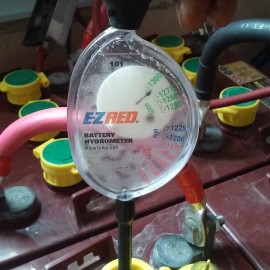
Over 12 months we have had power every day but 4 days (due to a cable failure). As we optimize the system we sacrifice less. The Trojan batteries have been awesome. We have been able to bring them back from near death. 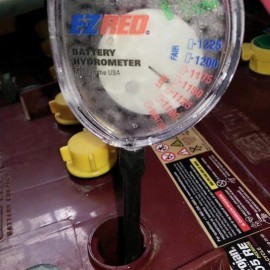
The Power Situation in Nigeria
We don’t remember it being this bad for some time. People get flashed for 1 hour a week and yet they are expected to pay the bill. People have run their generators 12 to 18 hours a day for weeks at a stretch.
We are really saddened that despite the billions of dollars in investments, Nigeria still produces less than 3000 MW of electricity.
The powers that be have finally realized that a solution must include renewables and they are all pointing at solar power.
Solar alone can’t do it. Micro Hydro, Wind and Solar will do it. Lets all play our part in making this a reality.
We sprang forward and it got warm
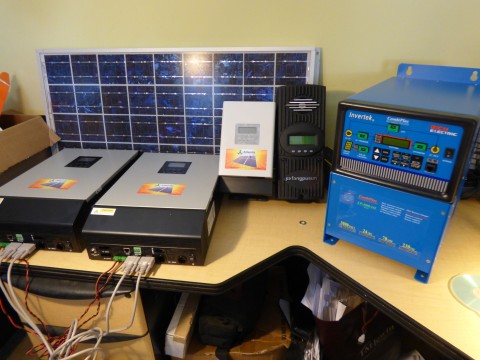
We finally got above freezing. Since my return 1 month ago it has been one or two snow storms a week. The thermometer refused to budge above the freezing mark. Today the temperatures got above 50 degrees F and here I am barefoot and no hat standing outside and basking in the joy of a warm day. Africans don’t know what we have. It felt good liberating myself of my bulky clothes and having the sun touch my skin. Thank you spring.
Countdown to the Nigerian Election
It is a very exciting time to be a Nigerian. For the first time in recent political history the electorate is the pretty girl that everyone wants to take on a date. The political class has come to campaign at your doorstep. Instead of flying past you, they now drive to you. They are begging you to give them a 2nd chance. For the first time the voter is an unknown. The President and his opponents are doing what they can to show the people that they care and how they will benefit from democracy. It is a good place for Nigeria and it can
There are 4 ways to get power today in Nigeria. The grid (NEPA/PHCN/DICO), a generator, an Inverter or a solar generator. While each has its strength, there are clear advantages some hold over the other. We will review them in Numerical order and then you can decide which is the best solution for you.
1. The grid NEPA/PHCN/DISCO. In most countries this is your first choice. It should be reliable, quick to deploy, low cost of ownership and requires no maintenance. In Nigeria and most of Sub Saharan Africa the grid is unreliable. You can go days without power. When the power is delivered it can be epileptic, too low or too high. Can be destructive to appliances and sensitive electronics. You can’t plan because there is no time table for when you will have power. Expensive to deploy in ares that don’t have access to the grid.
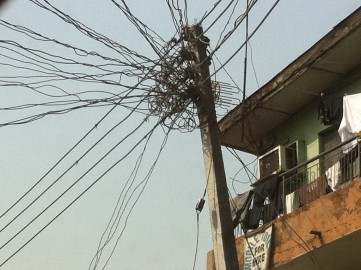
2. A Generator: Inexpensive to buy, very quick to deploy, very easy to purchase and it is a mature solution. Easy to deploy in remote areas Generators are noisy, they pollute, they require expensive fuel frequently, need service and require a ventilated area for installation. High risk of injury from burns or asphyxiation. The cost of fueling a generator can be high if you run them daily. Most small generators are designed as back up and they can’t run for extended periods of time without breaking down or service. Low quality generators can be destructive to sensitive electronics. The running costs are higher than an other solution available.

3. The Inverter: They cost more than a generator per Kw to buy and requires professional installation. They require very little maintenance, make no noise, don’t pollute, can be installed indoors. The require little to no maintenance. Inverters have an automatic transfer switch and UPS function built in. The Inverter needs the grid or a generator to recharge the batteries. They were not designed as permanent solutions, so they get hot during extended use and eventually will suffer failure from excessive heat. The battery chargers on most Inverters lack the proper charge logic, resulting in premature battery failure.
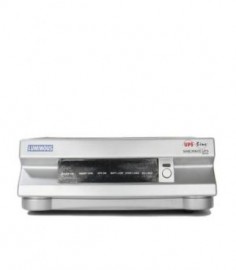
4. Solar power Generator: Has the most initial upfront cost per Kw. Requires installation by an experienced solar professional. Can be designed to meet the budgets and needs of a client. Can be a back up or permanent solution. Makes no noise, does not pollute, designed as a permanent solution, equipment is more robust and will last longer. Comes with a UPS and an automatic transfer switch built in. The batteries will charge with the sun, NEPA/PHCN or a generator. If the system is properly sized you can completely avoid using a generator. Some customers in remote areas have gone completely off the grid. Has running costs that are close to grid power per watt hour. Lowest after the grid. It takes a few days to as much as one month to tailor your usage to your installed capacity. Solar power requires that the panels be cleaned during the dry season.

What you decide to use will be determined by your budget, the amount of power you receive from the grid and how much space you have. We hope this helps you decide on a solution that will help you manage the poor supply coming from the grid.
How to safely use a generator.
I read a post on my friends Facebook page and it was about someone who died as a result of a generator fire. He was a younger brother to a commissioner in his home state and this happened in December. He went to refuel his generator while it was still running, this caused an explosion that resulted in burns on over 80% of his body.
I mention his brother to let you know that even those in high places make the mistake this young man made. So what is the safest way to use a generator? Follow these simple tips and you should
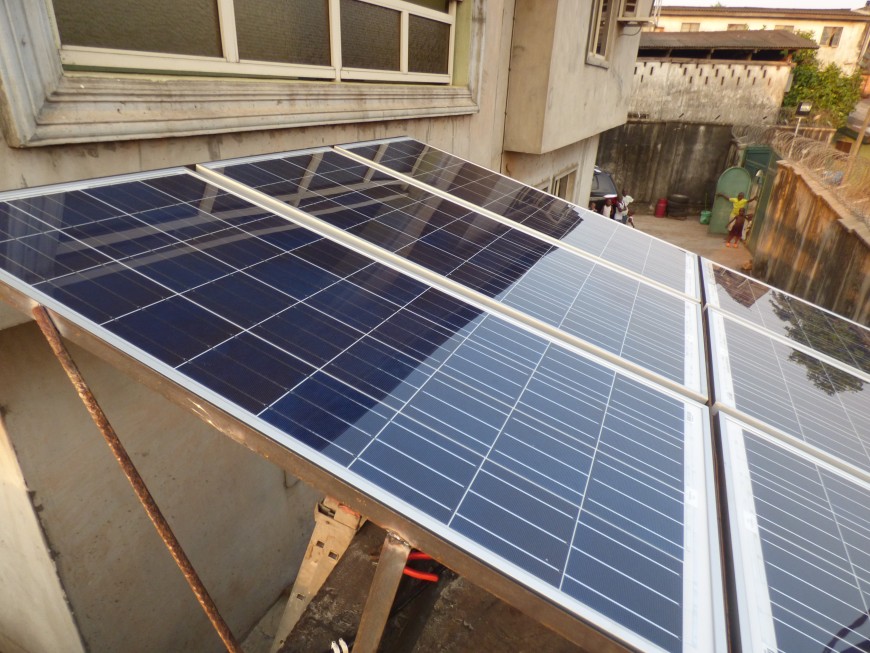
Conversation with our client two days ago.
C: Can you tell me how many more panels I will need when you come to install them.
A: We have you getting six 255 W panels.
C: How much more will I need? I am using 9 % now (450W) and when the water pump comes on it goes to 45%. I want to run two AC.
A: How long are your 490 AH batteries lasting?
C: I am getting more than 12 hours out of them. I have not used my Gen since you installed the system. PHCN comes just before the system starts to beep.
A: You know you purchased 1202 AH in batteries. Lets bring the panels and your new batteries and we can monitor your charge and discharge rate and we can then determine how many more you will need.
C: I want to have everything right from the get go.
A: 2.5 Kw in panels should take you through the day. I can’t guarantee your nights if you run 2 AC’s with 1202 AH in batteries.
C: I might need a bigger battery bank.
A: Yes you will.
A client that is thinking ahead. The system is performing well and he has saved so much money on fuel. When we add his panels next month (after he finishes building the carport) he won’t think about a generator anymore. Sweet
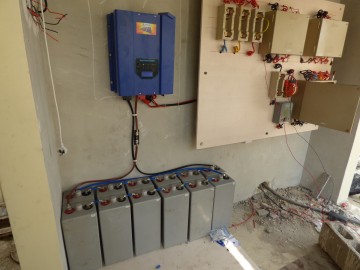
Conversation today February 12, 2015 at 3:30 AM
What happens when you run your batteries down at 10 PM
The client called from Lagos and said
C: I have not had light since 10 pm last night.
A: Can you explain the circumstances
C: It rained heavily yesterday and we have not had NEPA for 2 days.
A: Do you know what the voltage of your batteries are?
C: 20.6 V.
A: Do you remember our conversation about you not buying enough batteries and panels and if NEPA is out for 2 days and it rains to turn off your freezer and water pump. 20.6 is a battery in crisis. Your operating range is between 24 and 26. Did you hear the alarm?
C: Yes we did. It beeped for a few hours and then the lights went out.
A: It is 930 AM what is the voltage of your battery?
C: 22.8 V
A: Leave the system off for 6 hours, the sun should recharge your batteries fully today. You can spring some money to double your battery bank and you won’t have to worry again.
C: So you are saying that I ran out of fuel.
A: Yes you have a fuel tank that is deigned for 24 to 30 hours. You got 48 hours out of it. Turn every thing off and your tank will be full in 6 to 8 hours.
C: Thank you I will pay attention to my batteries going forward.
A: I am sure someone used an Iron and the water pump did stress it when it was discharged but the batteries will recover.
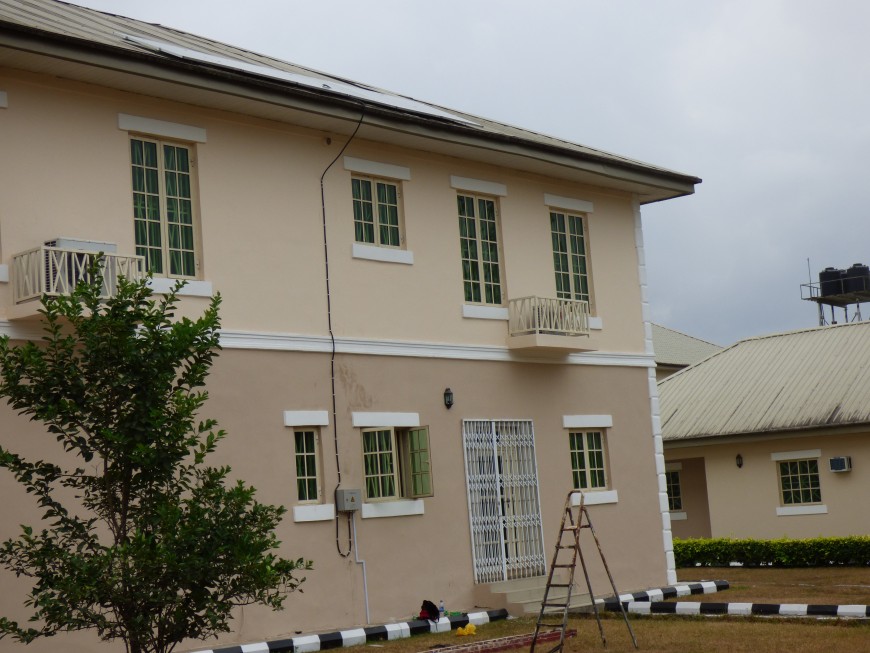

It has been an awesome year for us. We are thankful to our customers that have made our growth possible. Our systems can be found in Lagos, Abia and Rivers States. We have made sales in Ghana, Delta and Imo States. We can’t wait for 2015 to begin so that we dazzle you with our solution that provides electricity with no noise or pollution.
Challenges we faced
We started with an inverter that clearly did not meet our goals for our customers. They were finicky, required customer intervention and failed at the slightest provocation. Our customers were willing to adapt to the performance of the systems. We refused to accept equipment that did not deliver on the promises we made customers. The objective was to provide more than just lighting.
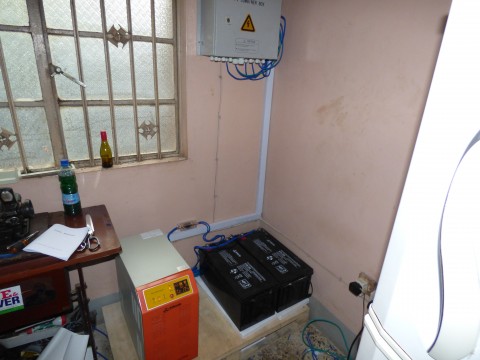
The replacement was on a different planet relative to the original. The 2 KW pumped water, ran the fridge and freezer, came with a powerful built in charger and was much more durable. It was also very tolerant of the poor voltage that NEPA supplied to many homes.
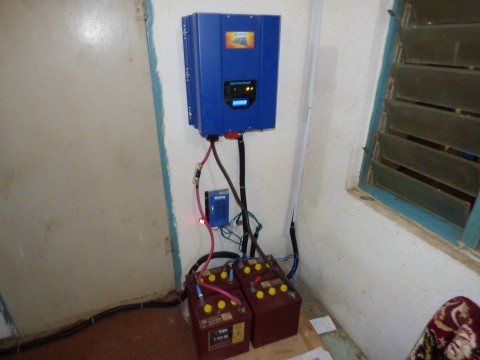
We also realized that batteries were the biggest key to success. The best solution was always to buy more batteries than you need. Most customers did not want to make the investment. So we had to find a battery that would survive the discharge and recharge cycle that our customers will subject them to. We picked the Trojan flooded lead acid battery to be our battery of choice. They have proven to be ideal. They require an initial boost charge before you use them. But once that is done they are awesome. They get better the more they are used. Unlike the sealed batteries, they don’t have to be fully charged daily. This is ideal for customers who have small battery banks in cloudy places,

You must be logged in to post a comment.